For five years now, David Anguko Lore has not been able to till his four-acre piece of land in Kasiwindi village of Ombaka, in Nyando, Kisumu County
This is the longest in his life, that he has had to stay away from the land due to flooding.
Anguko lamented the changed circumstances, “We have experienced flooding since childhood, it did displace us, but shortly after, we returned to our homes, never did any flood keep us out of our homes for over a year.”
The latest flooding which hit the area in 2019 remains the worst in Anguko’s lifetime.
“It was a rainy evening like any other experienced in the rainy season, suddenly we were surrounded by raging waters, it was quite unexpected,” he recalled.
We lost a lot of household goods. Our home was marooned, houses collapsed, and livelihoods lost
David Anguko
The flooding which has been attributed to the swelling levels of Lake Victoria displaced over 2, 000 families along the lake shores in Nyando and Kadibo, according to Kisumu County Government Department of Special Programs.
Radar altimetry data indicate that the lake’s water levels reached 1137.29 meters (3731.27 feet) above mean sea level on May 19, 2021, a high for satellite data records that date to 1992.
Anguko is one of the victims of the flooding.
“We lost a lot of household goods. Our home was marooned, houses collapsed, and livelihoods lost,” he said.
According to Anguko, the four-acre parcel of land under cultivation, his main source of income, became submerged in the water.
His fishing gear were also damaged.
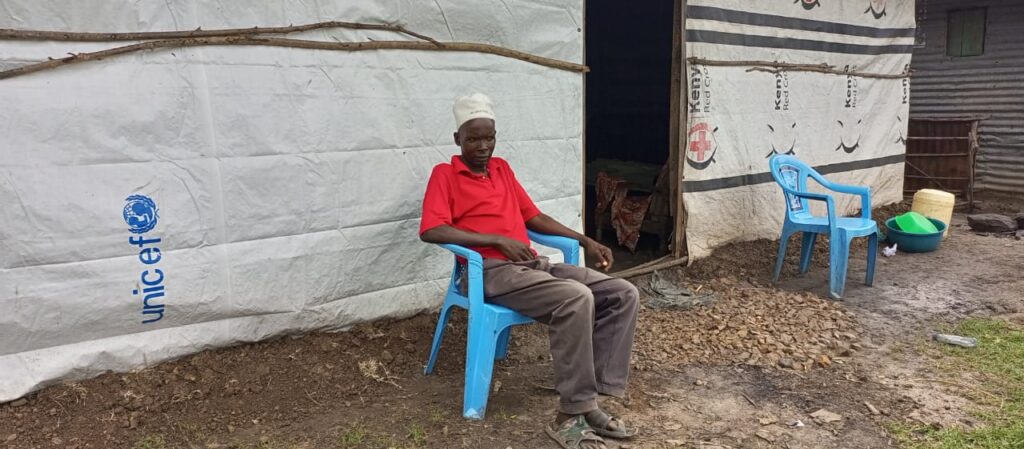
Five agonizing years in camps
Lake Region Bulletin found Anguko, 60, at a makeshift structure which became his home from 2019.
It is a temporary structure covered with old tents.
“A good Samaritan allowed me to put up here, but it is a temporary place, so I am not allowed to put up a permanent structure,” he informs us.
The father of six children is now frail and unable to effectively fend for his family.
“I not only lost my source of livelihood, but also my dignity given my current living condition,” he said.

In the neighboring village in Kaloo, nine other families are hosted in an abandoned structure formerly Ombaka Secondary School.
The school was relocated due to the flooding which marooned classes.
Three years later, water subsided in the former school, and these families moved in to find shelter after the tents they were living in were damaged.
Life has become so difficult. With most of the areas under water, we can’t produce food from our farms, we can’t fetch firewood from the lakeshores, hence challenging to get basic needs
Beatrice Anyango
Seventy-three-year-old John Muga Ongere is the oldest occupant here.
“Initially, we had sought refuge at Ombaka School, but when school sessions resumed, we were forced to move out, but now the school relocated and we came back,” he said.
When Lake Region Bulletin visited the place, children oblivious of their parent’s agony and surrounding, playfully and excitedly, ran around the veranda.
“The girls stay in one classroom, and the boys share a separate classroom. The other classes are used by the parents,” says Beatrice Anyango, 48.
Anyango, one of the flood victims, is a widow, and lives here with her six children.
“Life has become so difficult. With most of the areas under water, we can’t produce food from our farms, we can’t fetch firewood from the lakeshores, hence challenging to get basic needs,” she added.
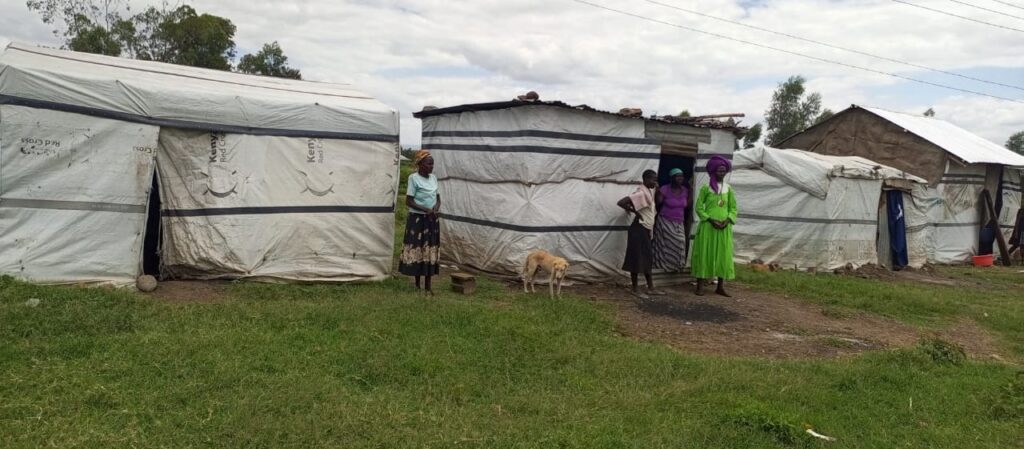
Roseline Adhiambo, 51, lives here with her husband and seven children. Many other elderly people live here with their grandchildren.
“The wait has been long and the hope of returning to our homes are fast dashing,” she said.
The situation is the same in the neighboring location of Ogenya.
Prisca Atieno, 60, had her home in Wachiegwe village marooned in 2019.
She had to move four kilometers, leaving her 2-acre parcel of land, to settle in Kanyiyamo village in a tent.
“Farming was our source of income, that is gone, I have to do menial jobs like house chores to get by,” Atieno said.
As a woman, I had certain obligations, like clothing myself and my children, buying food and other basic things like sanitary pads for my girls. Without money, our families are exposed, and our girls are even more vulnerable
Priscah Atieno
A story replicated across the several makeshift camps and shelters; families living like refugees as a result of floods.
“We have nowhere to go, and nothing to do, but just to try to get our next meal,” she cried out.
“As a woman, I had certain obligations, like clothing myself and my children, buying food and other basic things like sanitary pads for my girls. Without money, our families are exposed, and our girls are even more vulnerable,” she narrated.
At this camp, we find Rose Osiro, 34, Addah Akeyo, 58, and 73-year-old Turfena Ogada who is the oldest.
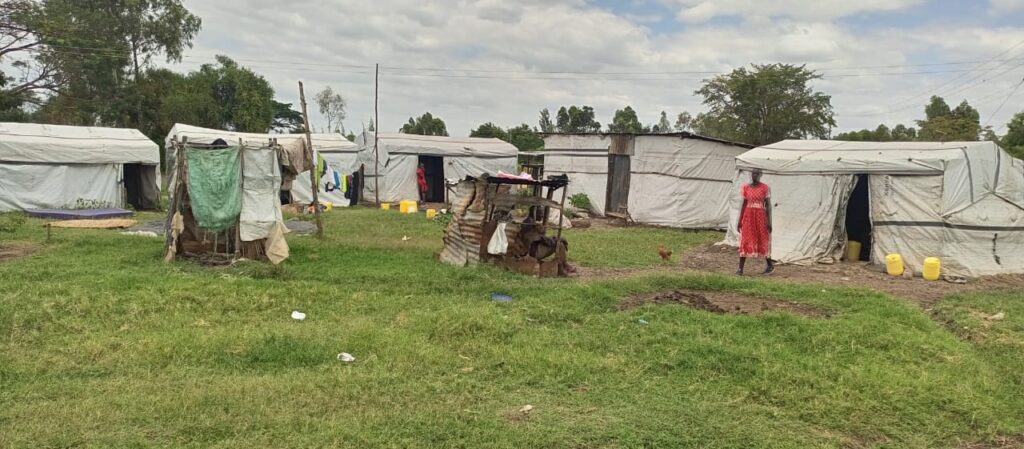
Disinformation mars relocation efforts
Mama Ogada moved from Konyango Adiel village, leaving her entire family land
The traditional birth attendant previously depended on farming as her main source of livelihood, but now depends on the intermittent delivery service charges, as well as on well-wishers.
“At this point, there is nothing more left, but my hope that the water subsides so that when I die, I am laid to rest in my home,” she pleaded.
The residents still hold on to the hope of returning to their flood prone land, saying they will never abandon their ancestral home.
Most of them have no alternative places to rebuild their lives, they are holding on in tents for fear of losing their land if they relocate to far areas.
This follows circulation of reports that there are plans to grab their land once they are relocated.
“This area is very fertile, and we cannot afford to lose the parcels,” said Anguko.
Sentiments echoed by Akeyo who said vacating the area completely is not an option.
Ogenya Chief, Barnabas Odhong’ confirms that plans to relocate the residents collapsed due to disinformation that this was a plan to grab their land.
According to Mr. Odhong’, in 2021, a Non-Governmental Organization reached out to the residents, proposing to secure some land to relocate them.
“Most of the affected declined, demanding that the intervention should not be geared at taking them away from their ancestral land,” he said.
“They instead proposed the completion of the diking of River Nyando to curb overflow during heavy rains, and de-siltation of Lake Victoria to prevent backflow,” he shares.
He however notes that the fear of losing land has no basis, even as he pledged to continue engaging them on the best solution.
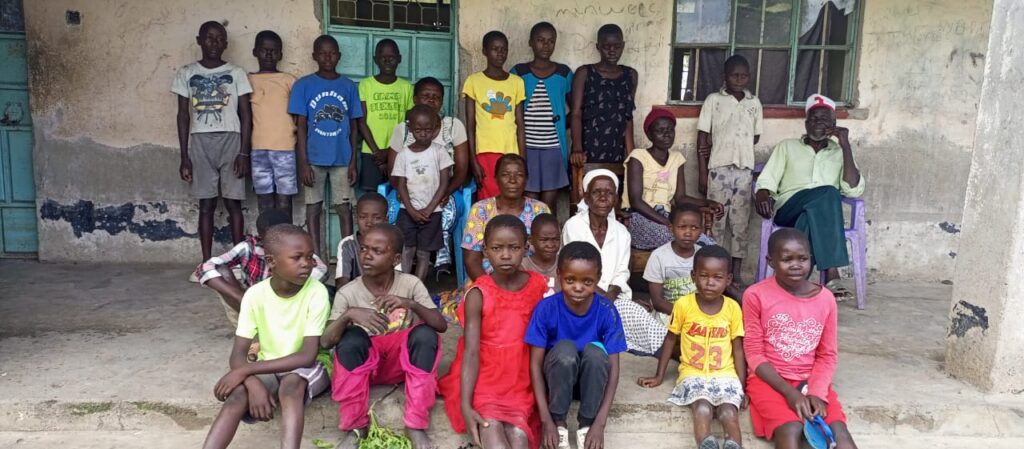
Meteorologists warn of impending dangers
But even as the residents reject relocation efforts, weather experts cast a dark shadow on reclamation efforts.
Kisumu County Director of Meteorological Services Paul Oloo says it will take longer before the residents can return to their homes.
According to Oloo, the increase in water levels in Lake Victoria is contributed by rainfall and inflow through the rivers feeding the lake.
He said the region is expected to receive heavy rainfall between March and June this year.
“This will definitely add to the water levels in the lake, hence more flooding,” he reveals.
This implies, that those affected like Anguko, will have to endure longer at temporary shelters or, accept to be relocated to regain decent accommodation to enable them to regain their livelihood and dignity.
International Federation of Red Cross and Red Crescent Societies report published in March 2022 revealed that at least 145, 000 people were affected in the 2021/2022 flooding session across the country.
The report indicated that the population represented 29, 000 households.
Out of this, 8, 850 households were displaced.
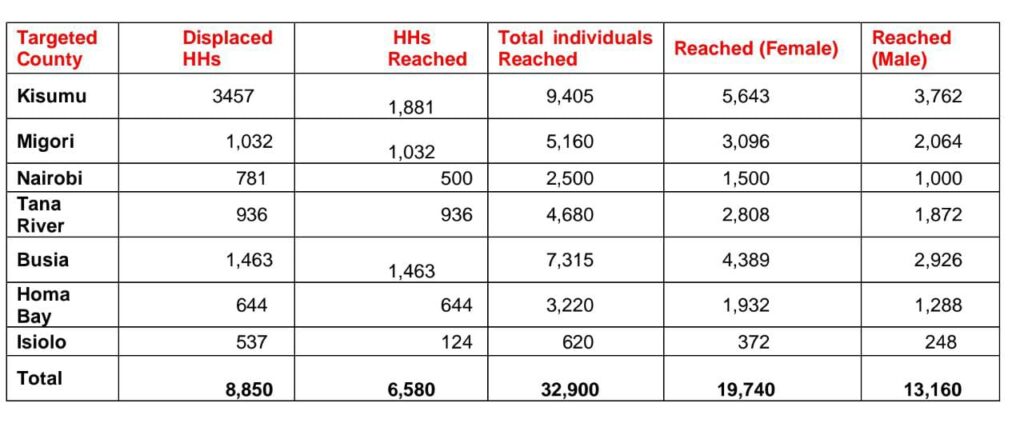
A total of 4,752 acreages of agricultural land had also been destroyed in the 12 counties of Kisumu, Homa Bay, Busia, Migori, Tana River, Taita Taveta, Nairobi, Narok, Trans Nozia, Elgeyo Marakawet, Siaya, Isiolo, and Marsabit.
The report further indicated that Kenya Red Cross Society (KRCS) distributed a total of 4,458 household emergency shelter items in the seven counties; (861 Busia, 324 Homabay, 1216 Kisumu, 733 Migori, 500 in Nairobi, 700 in Tana River,124 In Isiolo (bordering Garissa)) in support to affected communities.
“From the joint assessment by KRCS and other stakeholders in West Kenya, there were people reported to be still living in nine camps as their shelter had been rendered inhabitable, several water sources and sanitation facilities had also been affected,” read the report.
